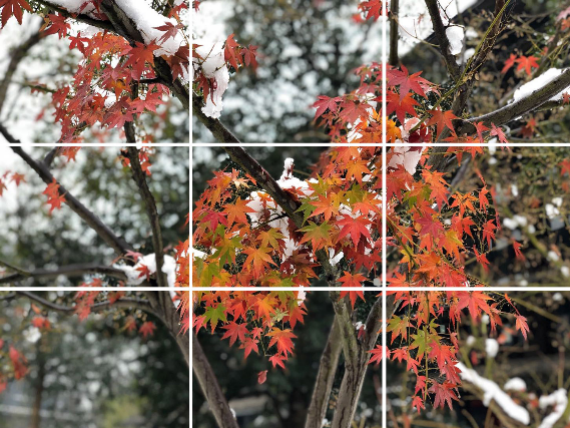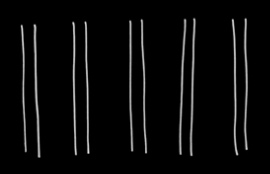2025知到答案 可视化导论 最新智慧树满分章节测试答案
见面课:可视化交互
文章目录
1、问题:在一个散点图中,鼠标悬浮在一个圆点上显示出提示窗口 (tooltip),该操作属于:
选项:
A:选择(select)
B:浏览(explore)
C:编码(encode)
D:展开(elaborate)
答案: 【选择(select)】
2、问题:在一个数据表格中、对某一列属性作排序,该操作属于:
选项:
A:选择(select)
B:浏览(explore)
C:编码(encode)
D:重新配置(reconfigure)
答案: 【重新配置(reconfigure)】
3、问题:动态查询(dynamic query)相比数据库查询,优点包括:
选项:
A:能提供实时查询反馈
B:展示所查询数据的边界
C:支持复杂的查询逻辑
D:支持撤回
答案: 【能提供实时查询反馈;
展示所查询数据的边界;
支持撤回】
4、问题:鱼眼效果(fisheye)和缩放(zooming)都会扭曲视觉元素。
选项:
A:对
B:错
答案: 【错】
5、问题: 将数据在三维空间中可视化后,容易出现遮挡和扭曲问题,所以不推荐将二维信息在三维空间中展示。
选项:
A:对
B:错
答案: 【对】
见面课:可视化导论——基础篇
1、问题:选择对应的数据属性类型:销售商品的品名、衣服尺码(S, M, L, XL等等)、人的体重分别是()数据
选项:
A:数值型、类别型、序数型
B:数值型、序数型、类别型
C:类别型、序数型、数值型
D:类别型、数值型、序数型
答案: 【类别型、序数型、数值型】
2、问题:可视化流程中, 可视化映射是将空间坐标、不同位置数据间的联系、数据数值等映射为可视化视觉通道的不同元素。
选项:
A:对
B:错
答案: 【对】
3、问题:当数据映射为不同的可视化元素时, 人对数据感知的准确性是不同的. 针对数值有序类别型三种数据类型使用的可视化编码方式, 优先级最高的是()
选项:
A:色调
B:长度
C:位置
D:面积
答案: 【位置】
4、问题:走势图(sparkline)是一种紧凑简洁的时序数据趋势表达方式
选项:
A:对
B:错
答案: 【对】
5、问题:可视化和其他数据分析处理方法最大的不同是用户的关键作用, 可视化映射后的结果只有通过用户感知才能转换成知识和灵感
选项:
A:对
B:错
答案: 【对】
6、问题:提高可视化美学性方法有如下哪几条()
选项:
A:聚焦
B:平衡
C:简单
D:释义
答案: 【聚焦;
平衡;
简单】
7、问题:可视化编码由图形元素标记和用于控制标记的视觉特征的视觉通道。常见的标标记包括点、线、面、体 ,以下属于视觉通道的是()
选项:
A:大小
B:形状
C:位置
D:颜色
答案: 【大小;
形状;
位置;
颜色】
8、问题:下面那些数据相似性度量适用于类别型数据?
选项:
A:欧氏距离
B:杰卡德距离
C:汉明距离
D:曼哈顿距离
答案: 【杰卡德距离;
汉明距离】
见面课:可视化导论——时空数据篇
1、问题:如图所示的地图等高线属于哪一种空间场?
选项:
A:二维标量场
B:二维矢量场
C:三维标量场
D:三维矢量场
答案: 【二维标量场】
2、问题:方位角投影属于等角度投影的一种。
选项:
A:对
B:错
答案: 【错】
3、问题:当地图中展示的点和线过多,导致出现重叠与交叉的情况时,可以通过以下哪种方法增加可读性:
选项:
A:数据抽象
B:数据聚合
C:数据采样
D:合理布局
答案: 【数据抽象;
数据聚合;
数据采样;
合理布局】
4、问题:分级统计图(Choropleth Map)总是假设数据在每个区域内是平均分布的。
选项:
A:对
B:错
答案: 【对】
5、问题: 如图所示的侏罗纪公园的故事线可视化(Storyline)刻画的是以下具有哪种属性的时间:
选项:
A:线性时间
B:周期时间
C:时间间隔
D:分支时间
答案: 【分支时间】
6、问题:如图所示是采用高维连线投影法可视化心电图采样序列的实例,图(a)为心电图采样序列,图(b)为采样点连线,图(c)对应了图(a)中黑色区段的心电图异常区域。请问该图中使用了以下哪种多变量时变型数据可视化的方法:


选项:
A:数据抽象
B: 数据聚类
C:特征分析
D:数据预测
答案: 【数据抽象;
特征分析】
7、问题:地理空间可视化一般有如下哪几种可视化形式
选项:
A:点可视化
B:线可视化
C:区域可视化
D:抽象可视化
答案: 【点可视化;
线可视化;
区域可视化】
见面课:可视化导论——非时空数据篇
1、问题:对于层次结构关系的数据,例如公司组织机构关系、家谱等数据,更适合使用哪种图表进行可视化?
选项:
A:柱状图
B:树状图
C:网络图
D:折线图
答案: 【树状图】
2、问题:对于微博转发关系,更适合使用哪种图表进行可视化?
选项:
A:柱状图
B:树状图
C:网络图
D:折线图
答案: 【网络图】
3、问题:层次结构关系数据是特殊的网络关系数据,因此树状图是特殊的网络图。
选项:
A:对
B:错
答案: 【对】
4、问题:网络关系数据可以用多种形式进行可视化,空间填充是其中重要的手段。
选项:
A:对
B:错
答案: 【错】
5、问题:网络关系数据可视化中,节点链接图和邻接矩阵是常用的布局方法,二者甚至可以有效融合,共同表达一个复杂的网络图。
选项:
A:对
B:错
答案: 【对】
6、问题:树是表达层次关系数据的经典数据结构,其常用的可视化方法包括:
选项:
A:节点链接图
B:空间填充图
C:节点链接和空间填充混合图
D:这三个都不是
答案: 【节点链接图;
空间填充图;
节点链接和空间填充混合图】
7、问题:图是表达网络关系数据的经典数据结构,其常用的可视化方法包括:
选项:
A:节点链接图
B:空间填充图
C:邻接矩阵图
D:这三个都不对
答案: 【节点链接图;
邻接矩阵图】
8、问题:图可视化中,节点链接图相比于邻接矩阵有哪些优势?
选项:
A:结点之间的关系更加清晰
B:适合于大规模网络数据的布局
C:布局比较灵活,参数可以调节
D:布局效率高,算法复杂度较低
答案: 【结点之间的关系更加清晰;
适合于大规模网络数据的布局;
布局比较灵活,参数可以调节】
第一章 单元测试
1、单选题:
以下不属于可视化的作用的是( )
选项:
A:传播交流
B:数据分析
C:数据采集
D:信息记录
答案: 【数据采集】
2、单选题:
数据可视化萌芽于什么时间( )
选项:
A:16世纪
B:15世纪
C:18世纪
D:17世纪
答案: 【16世纪】
3、单选题:
可视分析学是何时兴起的( )
选项:
A:21世纪
B:18世纪
C:19世纪
D:20世纪
答案: 【21世纪】
4、单选题:
张量场可视化属于可视化的哪个分支学科( )
选项:
A:人机交互学
B:科学可视化
C:信息可视化
D:可视分析学
答案: 【科学可视化】
5、单选题:
使用以下哪种可视化工具不需要编程基础( )
选项:
A:Vega
B:D3.js
C:Tableau
D:Processing
答案: 【Tableau】
6、判断题:
数据可视化的原则是细节优先。
选项:
A:对
B:错
答案: 【错】
7、判断题:
文本可视化属于信息可视化。
选项:
A:错
B:对
答案: 【对】
8、多选题:
可视分析学涉及到的学科包括( )@font-face{font-family:"Times New Roman";}@font-face{font-family:"宋体";}@font-face{font-family:"Calibri";}@font-face{font-family:"微软雅黑";}@list l0:level1{mso-level-number-format:alpha-upper;mso-level-suffix:tab;mso-level-text:"%1.";mso-level-tab-stop:none;mso-level-number-position:left;margin-left:18.0000pt;text-indent:-18.0000pt;font-family:'Times New Roman';}@list l0:level2{mso-level-number-format:alpha-lower;mso-level-suffix:tab;mso-level-text:"%2)";mso-level-tab-stop:none;mso-level-number-position:left;margin-left:42.0000pt;text-indent:-21.0000pt;font-family:'Times New Roman';}@list l0:level3{mso-level-number-format:lower-roman;mso-level-suffix:tab;mso-level-text:"%3.";mso-level-tab-stop:none;mso-level-number-position:right;margin-left:63.0000pt;text-indent:-21.0000pt;font-family:'Times New Roman';}@list l0:level4{mso-level-number-format:decimal;mso-level-suffix:tab;mso-level-text:"%4.";mso-level-tab-stop:none;mso-level-number-position:left;margin-left:84.0000pt;text-indent:-21.0000pt;font-family:'Times New Roman';}@list l0:level5{mso-level-number-format:alpha-lower;mso-level-suffix:tab;mso-level-text:"%5)";mso-level-tab-stop:none;mso-level-number-position:left;margin-left:105.0000pt;text-indent:-21.0000pt;font-family:'Times New Roman';}@list l0:level6{mso-level-number-format:lower-roman;mso-level-suffix:tab;mso-level-text:"%6.";mso-level-tab-stop:none;mso-level-number-position:right;margin-left:126.0000pt;text-indent:-21.0000pt;font-family:'Times New Roman';}@list l0:level7{mso-level-number-format:decimal;mso-level-suffix:tab;mso-level-text:"%7.";mso-level-tab-stop:none;mso-level-number-position:left;margin-left:147.0000pt;text-indent:-21.0000pt;font-family:'Times New Roman';}@list l0:level8{mso-level-number-format:alpha-lower;mso-level-suffix:tab;mso-level-text:"%8)";mso-level-tab-stop:none;mso-level-number-position:left;margin-left:168.0000pt;text-indent:-21.0000pt;font-family:'Times New Roman';}@list l0:level9{mso-level-number-format:lower-roman;mso-level-suffix:tab;mso-level-text:"%9.";mso-level-tab-stop:none;mso-level-number-position:right;margin-left:189.0000pt;text-indent:-21.0000pt;font-family:'Times New Roman';}p.MsoNormal{mso-style-name:正文;mso-style-parent:"";margin:0pt;margin-bottom:.0001pt;mso-pagination:none;text-align:justify;text-justify:inter-ideograph;font-family:Calibri;font-size:10.5000pt;mso-font-kerning:1.0000pt;}span.msoIns{mso-style-type:export-only;mso-style-name:"";text-decoration:underline;text-underline:single;color:blue;}span.msoDel{mso-style-type:export-only;mso-style-name:"";text-decoration:line-through;color:red;}@page{mso-page-border-surround-header:no; mso-page-border-surround-footer:no;}@page Section0{}div.Section0{page:Section0;}
选项:
A:计算机图形学
B:人机交互
C:数据挖掘
D:统计分析
答案: 【计算机图形学;人机交互;数据挖掘
;统计分析】
9、多选题:
以下哪些工具是数据可视化工具( ) @font-face{font-family:"Times New Roman";}@font-face{font-family:"宋体";}@font-face{font-family:"Calibri";}@font-face{font-family:"微软雅黑";}p.MsoNormal{mso-style-name:正文;mso-style-parent:"";margin:0pt;margin-bottom:.0001pt;mso-pagination:none;text-align:justify;text-justify:inter-ideograph;font-family:Calibri;font-size:10.5000pt;mso-font-kerning:1.0000pt;}span.msoIns{mso-style-type:export-only;mso-style-name:"";text-decoration:underline;text-underline:single;color:blue;}span.msoDel{mso-style-type:export-only;mso-style-name:"";text-decoration:line-through;color:red;}@page{mso-page-border-surround-header:no; mso-page-border-surround-footer:no;}@page Section0{}div.Section0{page:Section0;}@font-face{font-family:"Times New Roman";}@font-face{font-family:"宋体";}@font-face{font-family:"Calibri";}@font-face{font-family:"微软雅黑";}p.MsoNormal{mso-style-name:正文;mso-style-parent:"";margin:0pt;margin-bottom:.0001pt;mso-pagination:none;text-align:justify;text-justify:inter-ideograph;font-family:Calibri;font-size:10.5000pt;mso-font-kerning:1.0000pt;}span.msoIns{mso-style-type:export-only;mso-style-name:"";text-decoration:underline;text-underline:single;color:blue;}span.msoDel{mso-style-type:export-only;mso-style-name:"";text-decoration:line-through;color:red;}@page{mso-page-border-surround-header:no; mso-page-border-surround-footer:no;}@page Section0{}div.Section0{page:Section0;}
选项:
A:Tableau
B:Vega
C:Matlab
D:D3.js
答案: 【Tableau;Vega;D3.js 】
10、多选题:
这个视频中体现了可视化的哪些作用( )
选项:
A:信息记录
B:传播交流
C:数据过滤
D:数据分析
答案: 【信息记录;数据分析】
第二章 单元测试
1、单选题:
有的人在发朋友圈的时候,会把一张图片切成9份,然后再按顺序拼出一个九宫格,如下图所示。虽然图片被分割开来,但是我们仍旧能够感知到图片原来完整的样子,这体现了格式塔理论的( )原则。 @font-face{font-family:'Times New Roman';}@font-face{font-family:'宋体';}@font-face{font-family:'DengXian';}p.MsoNormal{mso-style-name:正文;mso-style-parent:'';margin:0pt;margin-bottom:.0001pt;mso-pagination:none;text-align:justify;text-justify:inter-ideograph;font-family:DengXian;font-size:10.5000pt;mso-font-kerning:1.0000pt;}span.msoIns{mso-style-type:export-only;mso-style-name:'';text-decoration:underline;text-underline:single;color:blue;}span.msoDel{mso-style-type:export-only;mso-style-name:'';text-decoration:line-through;color:red;}@page{mso-page-border-surround-header:no; mso-page-border-surround-footer:no;}@page Section0{}div.Section0{page:Section0;}@font-face{font-family:'Times New Roman';}@font-face{font-family:'宋体';}@font-face{font-family:'DengXian';}p.MsoNormal{mso-style-name:正文;mso-style-parent:'';margin:0pt;margin-bottom:.0001pt;mso-pagination:none;text-align:justify;text-justify:inter-ideograph;font-family:DengXian;font-size:10.5000pt;mso-font-kerning:1.0000pt;}span.msoIns{mso-style-type:export-only;mso-style-name:'';text-decoration:underline;text-underline:single;color:blue;}span.msoDel{mso-style-type:export-only;mso-style-name:'';text-decoration:line-through;color:red;}@page{mso-page-border-surround-header:no; mso-page-border-surround-footer:no;}@page Section0{}div.Section0{page:Section0;}
@font-face{font-family:'Times New Roman';}@font-face{font-family:'宋体';}@font-face{font-family:'DengXian';}p.MsoNormal{mso-style-name:正文;mso-style-parent:'';margin:0pt;margin-bottom:.0001pt;mso-pagination:none;text-align:justify;text-justify:inter-ideograph;font-family:DengXian;font-size:10.5000pt;mso-font-kerning:1.0000pt;}span.msoIns{mso-style-type:export-only;mso-style-name:'';text-decoration:underline;text-underline:single;color:blue;}span.msoDel{mso-style-type:export-only;mso-style-name:'';text-decoration:line-through;color:red;}@page{mso-page-border-surround-header:no; mso-page-border-surround-footer:no;}@page Section0{}div.Section0{page:Section0;}@font-face{font-family:'Times New Roman';}@font-face{font-family:'宋体';}@font-face{font-family:'DengXian';}p.MsoNormal{mso-style-name:正文;mso-style-parent:'';margin:0pt;margin-bottom:.0001pt;mso-pagination:none;text-align:justify;text-justify:inter-ideograph;font-family:DengXian;font-size:10.5000pt;mso-font-kerning:1.0000pt;}span.msoIns{mso-style-type:export-only;mso-style-name:'';text-decoration:underline;text-underline:single;color:blue;}span.msoDel{mso-style-type:export-only;mso-style-name:'';text-decoration:line-through;color:red;}@page{mso-page-border-surround-header:no; mso-page-border-surround-footer:no;}@page Section0{}div.Section0{page:Section0;}
选项:
A:连续原则
B:相似原则
C:闭包原则
D:接近原则
答案: 【连续原则】
2、单选题:
下图所示的图片体现了格式塔理论的( )原则。 @font-face{font-family:'Times New Roman';}@font-face{font-family:'宋体';}@font-face{font-family:'DengXian';}p.MsoNormal{mso-style-name:正文;mso-style-parent:'';margin:0pt;margin-bottom:.0001pt;mso-pagination:none;text-align:justify;text-justify:inter-ideograph;font-family:DengXian;font-size:10.5000pt;mso-font-kerning:1.0000pt;}span.msoIns{mso-style-type:export-only;mso-style-name:'';text-decoration:underline;text-underline:single;color:blue;}span.msoDel{mso-style-type:export-only;mso-style-name:'';text-decoration:line-through;color:red;}@page{mso-page-border-surround-header:no; mso-page-border-surround-footer:no;}@page Section0{}div.Section0{page:Section0;}
@font-face{font-family:'Times New Roman';}@font-face{font-family:'宋体';}@font-face{font-family:'DengXian';}p.MsoNormal{mso-style-name:正文;mso-style-parent:'';margin:0pt;margin-bottom:.0001pt;mso-pagination:none;text-align:justify;text-justify:inter-ideograph;font-family:DengXian;font-size:10.5000pt;mso-font-kerning:1.0000pt;}span.msoIns{mso-style-type:export-only;mso-style-name:'';text-decoration:underline;text-underline:single;color:blue;}span.msoDel{mso-style-type:export-only;mso-style-name:'';text-decoration:line-through;color:red;}@page{mso-page-border-surround-header:no; mso-page-border-surround-footer:no;}@page Section0{}div.Section0{page:Section0;}
选项:
A:接近原则
B:连续原则
C:闭包原则
D:相似原则
答案: 【接近原则】
3、单选题:
下图所示的图片体现了格式塔理论的( )接近原则
选项:
A:闭包原则
B:相似原则
C:连续原则
D:接近原则
答案: 【相似原则】
4、单选题:
下图所示的可视化中运用了以下哪个视觉通道?( )

选项:
A:颜色
B:形状
C:高度
D:亮度
答案: 【高度】
5、单选题:
@font-face{font-family:"Times New Roman";}@font-face{font-family:"宋体";}@font-face{font-family:"DengXian";}p.MsoNormal{mso-style-name:正文;mso-style-parent:"";margin:0pt;margin-bottom:.0001pt;mso-pagination:none;text-align:justify;text-justify:inter-ideograph;font-family:DengXian;font-size:10.5000pt;mso-font-kerning:1.0000pt;}span.msoIns{mso-style-type:export-only;mso-style-name:"";text-decoration:underline;text-underline:single;color:blue;}span.msoDel{mso-style-type:export-only;mso-style-name:"";text-decoration:line-through;color:red;}@page{mso-page-border-surround-header:no; mso-page-border-surround-footer:no;}@page Section0{}div.Section0{page:Section0;}下图所示的可视化中体现了哪种类型的视觉通道?( ) @font-face{font-family:"Times New Roman";}@font-face{font-family:"宋体";}@font-face{font-family:"DengXian";}p.MsoNormal{mso-style-name:正文;mso-style-parent:"";margin:0pt;margin-bottom:.0001pt;mso-pagination:none;text-align:justify;text-justify:inter-ideograph;font-family:DengXian;font-size:10.5000pt;mso-font-kerning:1.0000pt;}span.msoIns{mso-style-type:export-only;mso-style-name:"";text-decoration:underline;text-underline:single;color:blue;}span.msoDel{mso-style-type:export-only;mso-style-name:"";text-decoration:line-through;color:red;}@page{mso-page-border-surround-header:no; mso-page-border-surround-footer:no;}@page Section0{}div.Section0{page:Section0;}
@font-face{font-family:"Times New Roman";}@font-face{font-family:"宋体";}@font-face{font-family:"DengXian";}p.MsoNormal{mso-style-name:正文;mso-style-parent:"";margin:0pt;margin-bottom:.0001pt;mso-pagination:none;text-align:justify;text-justify:inter-ideograph;font-family:DengXian;font-size:10.5000pt;mso-font-kerning:1.0000pt;}span.msoIns{mso-style-type:export-only;mso-style-name:"";text-decoration:underline;text-underline:single;color:blue;}span.msoDel{mso-style-type:export-only;mso-style-name:"";text-decoration:line-through;color:red;}@page{mso-page-border-surround-header:no; mso-page-border-surround-footer:no;}@page Section0{}div.Section0{page:Section0;}
选项:
A:分类型
B:定性型
C:分组型
D:定量型
答案: 【分组型
】
6、判断题:
根据格式塔理论,人们在观看时,眼脑在一开始的时候会先区分一个形象的各个单一的组成部分,然后再将各个部分组合起来,使之成为一个易于理解的统一体。
选项:
A:错
B:对
答案: 【错】
7、判断题:
@font-face{font-family:'Times New Roman';}@font-face{font-family:'宋体';}@font-face{font-family:'DengXian';}p.MsoNormal{mso-style-name:正文;mso-style-parent:'';margin:0pt;margin-bottom:.0001pt;mso-pagination:none;text-align:justify;text-justify:inter-ideograph;font-family:DengXian;font-size:10.5000pt;mso-font-kerning:1.0000pt;}span.msoIns{mso-style-type:export-only;mso-style-name:'';text-decoration:underline;text-underline:single;color:blue;}span.msoDel{mso-style-type:export-only;mso-style-name:'';text-decoration:line-through;color:red;}@page{mso-page-border-surround-header:no; mso-page-border-surround-footer:no;}@page Section0{}div.Section0{page:Section0;}形状是一种典型的定性视觉通道。
选项:
A:对
B:错
答案: 【对】
8、多选题:
下列视觉通道中,哪些是定性/分类视觉通道?( )
选项:
A:空间位置
B:角度
C:形状
D:颜色的饱和度
答案: 【空间位置;形状】
9、多选题:
下图所示的可视化中运用了什么视觉通道?( ) @font-face{font-family:'Times New Roman';}@font-face{font-family:'宋体';}@font-face{font-family:'DengXian';}p.MsoNormal{mso-style-name:正文;mso-style-parent:'';margin:0pt;margin-bottom:.0001pt;mso-pagination:none;text-align:justify;text-justify:inter-ideograph;font-family:DengXian;font-size:10.5000pt;mso-font-kerning:1.0000pt;}span.msoIns{mso-style-type:export-only;mso-style-name:'';text-decoration:underline;text-underline:single;color:blue;}span.msoDel{mso-style-type:export-only;mso-style-name:'';text-decoration:line-through;color:red;}@page{mso-page-border-surround-header:no; mso-page-border-surround-footer:no;}@page Section0{}div.Section0{page:Section0;}
@font-face{font-family:'Times New Roman';}@font-face{font-family:'宋体';}@font-face{font-family:'DengXian';}p.MsoNormal{mso-style-name:正文;mso-style-parent:'';margin:0pt;margin-bottom:.0001pt;mso-pagination:none;text-align:justify;text-justify:inter-ideograph;font-family:DengXian;font-size:10.5000pt;mso-font-kerning:1.0000pt;}span.msoIns{mso-style-type:export-only;mso-style-name:'';text-decoration:underline;text-underline:single;color:blue;}span.msoDel{mso-style-type:export-only;mso-style-name:'';text-decoration:line-through;color:red;}@page{mso-page-border-surround-header:no; mso-page-border-surround-footer:no;}@page Section0{}div.Section0{page:Section0;}
选项:
A:角度
B:颜色色调
C:空间位置
D:形状
答案: 【角度;颜色色调】
10、多选题:
以下关于感知与认知的一些描述,正确的有哪些?( )
选项:
A:在可视化中突出变化,可以减少认知负担
B:认知是信息加工的过程
C:可视化可以作为外部辅助来增强工作记忆
D:感知系统基于绝对判断
答案: 【在可视化中突出变化,可以减少认知负担;认知是信息加工的过程;可视化可以作为外部辅助来增强工作记忆】
支付后可长期查看
有任何疑问及时添加客服QQ:2025479448反馈
网站只是章节,不包含期末
购买期末+QQ:2025479448
